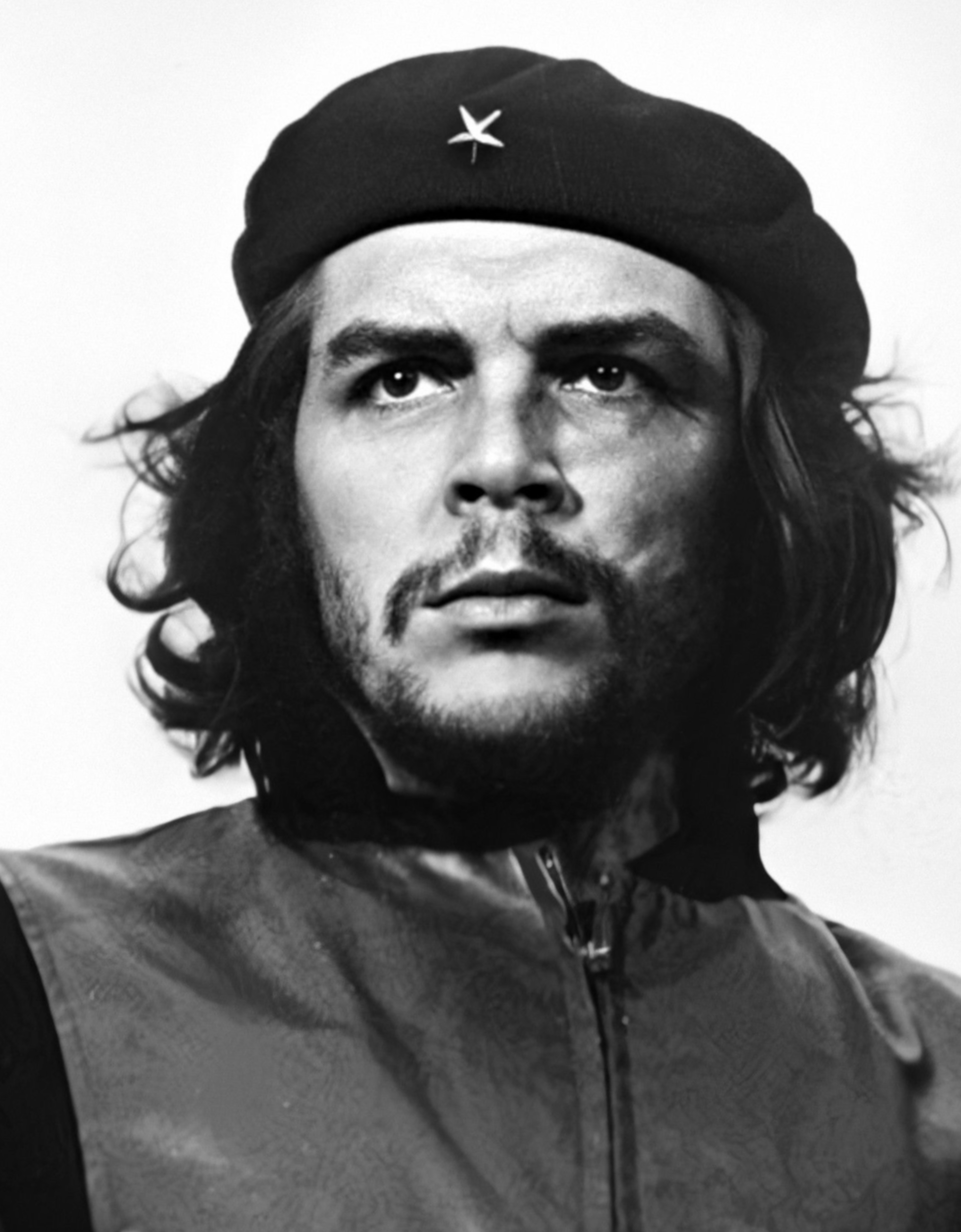More languages
More actions
(Structure draft) Tag: Visual edit |
mNo edit summary Tag: Visual edit |
||
| Line 46: | Line 46: | ||
* Richard L. Harris (2011). ''Che Guevara: a biography.'' Santa Barbara, Califonia: Greenwood. ISBN 978-0-313-35916-3 ([http://libgen.rs/book/index.php?md5=E894F200B27B2693CC5B5229B5DE50A3 Library Genesis link]) | * Richard L. Harris (2011). ''Che Guevara: a biography.'' Santa Barbara, Califonia: Greenwood. ISBN 978-0-313-35916-3 ([http://libgen.rs/book/index.php?md5=E894F200B27B2693CC5B5229B5DE50A3 Library Genesis link]) | ||
* Fidel Castro | * Fidel Castro (2006). ''Che: a memoir.'' Melbourne: Ocean Press. ISBN 978-1-921700-83-5 ([http://libgen.rs/book/index.php?md5=99FF4ED3FDF1F4BDB79D3CCFB39EAB66 Library Genesis link]) | ||
== References == | == References == | ||
Revision as of 19:52, 15 June 2021
Che Guevara | |
|---|---|
 Portrait of comrade Che | |
| Born | Ernesto Guevara June 14, 1928 Rosario, Santa Fé Province, Argentina |
| Died | October 9, 1967 (aged 39) La Higuera, Vallegrande Province, Bolivia |
| Cause of death | Executed by reactionaries |
| Nationality | Argentinian |
| Political orientation | Marxism-Leninism |
Ernesto "Che" Guevara (June 14th, 1928 — October 9th, 1967) was a Latin-American Marxist-Leninist revolutionary and a leader of the Cuban Revolution, alongside Fidel Castro. During his time in the government of Cuba, he was appointed president of the Central Bank of Cuba in 1959 and later Minister of Industry in 1961.[1]
Che was part of an expedition led by Fidel Castro that directed the armed struggle against the US-backed Cuban dictator Fulgencio Batista. Guevara also presided over Cuban delegations that visited various countries and was a representative of the revolutionary government in important international conclaves. During the October Crisis he was appointed military chief of the province of Pinar del Río.
In 1965 Che left Cuba to set up guerrilla forces first in the Congo and then later in Bolivia, where he was ultimately captured and killed in October 1967. Accounts of his execution have varied over the years, but many contemporary accounts indicate some degree of collaboration between Bolivia's government troops and the United States CIA. Che Guevara developed a theory of primacy of military struggle, in particular concept of guerilla foquismo. Many of Che's theories regarding guerilla tactics are articulated in his 1961 work "Guerilla Warfare."
History
Early life in Argentina
The motorcycle diaries
Guatemala and Mexico
Cuban Revolution
The Congo diary
The Bolivian diary
Works
Guerilla warfare
Reminiscences of the Cuban revolutionary war
On revolutionary medicine
Bibliography
- Richard L. Harris (2011). Che Guevara: a biography. Santa Barbara, Califonia: Greenwood. ISBN 978-0-313-35916-3 (Library Genesis link)
- Fidel Castro (2006). Che: a memoir. Melbourne: Ocean Press. ISBN 978-1-921700-83-5 (Library Genesis link)
References
- ↑ Richard L. Harris (2011). 'Timeline: events in the life of Che Guevara' in Che Guevara: a biography. Santa Barbara, Califonia: Greenwood. ISBN 978-0-313-35916-3 (Library Genesis link)
